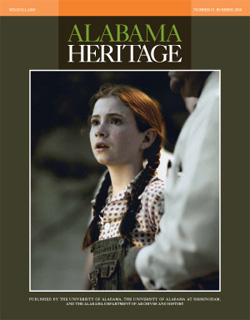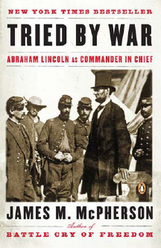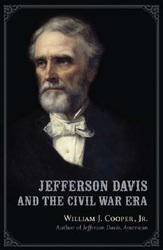|
On the cover: Hanna Brown played Scout in Monroeville's 2005 season of To Kill a Mockingbird. (Monroe County Heritage Museum/photo by M. A. Battilana)
|
FEATURE ABSTRACTS
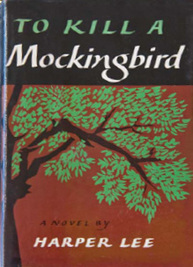
Universal Values: The Enduring Legacy of To Kill a Mockingbird
By Wayne Flynt
In conjunction with the fiftieth anniversary of the publication of Harper Lee’s bestselling book To Kill a Mockingbird, noted historian Wayne Flynt revisits the novel, considering its famous characters, its private and reserved author, and its prodigious effect on readers worldwide. Today, the book remains one of the most frequently read texts of our time, likely because of its continued relevance and its treatment of the timeless themes of morality, justice, and growing up. Despite its popularity, the book has incited some controversy for its treatment of race and questions concerning its authorship. Flynt skillfully traces the novel’s creation, explores the depths of its message, and reviews the reception it has received through the last half-century, detailing the multi-faceted issues surrounding this complex and compelling text.
Additional Information
The following articles in the Encyclopedia of Alabama will also be of interest:
About the Author
Wayne Flynt, a sixth-generation Alabamian, grew up in towns across Alabama, but considers Anniston home. After completing his undergraduate education, majoring in history and speech at Samford University, he completed his PhD at Florida State University. He taught for twelve years at his alma mater before becoming chair of the History Department at Auburn University in 1977. He taught for twenty-eight years at Auburn, retiring in 2005. Of his twelve books, two discuss Florida politics, three discuss white poverty, and two religion; eight discuss Alabama. Flynt has won numerous awards for writing, teaching, outreach, and public service. He has lectured around the world on To Kill a Mockingbird.
By Wayne Flynt
In conjunction with the fiftieth anniversary of the publication of Harper Lee’s bestselling book To Kill a Mockingbird, noted historian Wayne Flynt revisits the novel, considering its famous characters, its private and reserved author, and its prodigious effect on readers worldwide. Today, the book remains one of the most frequently read texts of our time, likely because of its continued relevance and its treatment of the timeless themes of morality, justice, and growing up. Despite its popularity, the book has incited some controversy for its treatment of race and questions concerning its authorship. Flynt skillfully traces the novel’s creation, explores the depths of its message, and reviews the reception it has received through the last half-century, detailing the multi-faceted issues surrounding this complex and compelling text.
Additional Information
The following articles in the Encyclopedia of Alabama will also be of interest:
- Harper Lee
- To Kill a Mockingbird
- Truman Capote
- Poverty in Alabama
- Scottsboro Boys' Trial
- Monroeville
- Alabama Literature
- Segregation (Jim Crow)
- Public Education in the Early Twentieth Century
About the Author
Wayne Flynt, a sixth-generation Alabamian, grew up in towns across Alabama, but considers Anniston home. After completing his undergraduate education, majoring in history and speech at Samford University, he completed his PhD at Florida State University. He taught for twelve years at his alma mater before becoming chair of the History Department at Auburn University in 1977. He taught for twenty-eight years at Auburn, retiring in 2005. Of his twelve books, two discuss Florida politics, three discuss white poverty, and two religion; eight discuss Alabama. Flynt has won numerous awards for writing, teaching, outreach, and public service. He has lectured around the world on To Kill a Mockingbird.
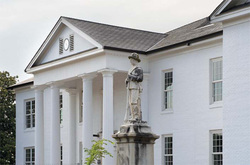 The St. Clair County Courthouse
The St. Clair County Courthouse(Robin McDonald)
Ashville: Old, New, and Lovely
By Margaret Clevenger
Tucked about an hour’s drive from Birmingham, the historic city of Ashville remains one of Alabama’s lesser-known treasures. First settled by Native Americans, Ashville takes its name from its first white residents, the John Ash family. Over the generations, the city has struggled to maintain its relevance in an increasingly modernized and urbanized world, but today, Ashville boasts a lovely balance of the historic and the contemporary. Margaret Clevenger recounts the city’s history and the ways its inhabitants are creating a modern city while retaining the small-town charm of Ashville's historic past.
Additional Information
The following articles in the Encyclopedia of Alabama will also be of interest:
About the Authors
Margaret Clevenger is a freelance writer living in Tuscaloosa. Her work has been published in several newspapers and magazines, including Jubilation, Mississippi Magazine, the Montgomery Advertiser, Pennsylvania Magazine, Southern Lady, the Tuscaloosa News, and Tuscaloosa magazine. This is the first time her work has appeared in Alabama Heritage.
By Margaret Clevenger
Tucked about an hour’s drive from Birmingham, the historic city of Ashville remains one of Alabama’s lesser-known treasures. First settled by Native Americans, Ashville takes its name from its first white residents, the John Ash family. Over the generations, the city has struggled to maintain its relevance in an increasingly modernized and urbanized world, but today, Ashville boasts a lovely balance of the historic and the contemporary. Margaret Clevenger recounts the city’s history and the ways its inhabitants are creating a modern city while retaining the small-town charm of Ashville's historic past.
Additional Information
The following articles in the Encyclopedia of Alabama will also be of interest:
- Ashville
- St. Clair County
- Inzer House in Ashville (photograph)
About the Authors
Margaret Clevenger is a freelance writer living in Tuscaloosa. Her work has been published in several newspapers and magazines, including Jubilation, Mississippi Magazine, the Montgomery Advertiser, Pennsylvania Magazine, Southern Lady, the Tuscaloosa News, and Tuscaloosa magazine. This is the first time her work has appeared in Alabama Heritage.
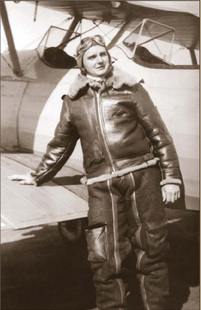 Future Pacific Theater ace
Future Pacific Theater ace Edward Cragg
(Edward E. Cragg)
Alabama’s Airfields: Remnants of a Forgotten Landscape
By Thomas V. Ress
As America entered the Second World War, it experienced a dramatic increase in its need for military personnel—and in places to train those personnel. Thanks to its location, Alabama hosted numerous military training facilities, particularly airfields. Author Thomas Ress chronicles these airfields and their effects on the war effort and on Alabama itself. Although many of the facilities no longer remain active, they helped shape the outcome of the war, the landscape of our state, and even the lifestyles of some of its people. The influx of military personnel often caused quite a stir in Alabama’s towns, and Ress explores the lasting connections some visitors forged with the state and its residents.
Additional Information
The following articles in the Encyclopedia of Alabama will also be of interest:
About the Author
Thomas V. Ress resides in Athens, Alabama. He is a freelance writer and has been writing for sixteen years. He has had over one hundred articles published in numerous magazines, newspapers, and websites including SKI, Backpacker, Blue Ridge Country and others. His article “Five Hours at Sulphur Trestle Fort” appeared in the Spring 2008 issue of Alabama Heritage. Ress grew up in southern Indiana and received his undergraduate degree from the University of Evansville and his master’s in business administration from Eastern Kentucky University. He currently does consulting work for the federal government.The author would like to thank Mr. Brian Rehwinkel for his valuable input to this article.
Errata
By Thomas V. Ress
As America entered the Second World War, it experienced a dramatic increase in its need for military personnel—and in places to train those personnel. Thanks to its location, Alabama hosted numerous military training facilities, particularly airfields. Author Thomas Ress chronicles these airfields and their effects on the war effort and on Alabama itself. Although many of the facilities no longer remain active, they helped shape the outcome of the war, the landscape of our state, and even the lifestyles of some of its people. The influx of military personnel often caused quite a stir in Alabama’s towns, and Ress explores the lasting connections some visitors forged with the state and its residents.
Additional Information
The following articles in the Encyclopedia of Alabama will also be of interest:
- World War II and Alabama
- Tuskegee Flight Training
- Maxwell Air Force Base and Gunter Annex
- Craig Airfield
- Moton Airfield in Tuskegee, AL (photograph)
About the Author
Thomas V. Ress resides in Athens, Alabama. He is a freelance writer and has been writing for sixteen years. He has had over one hundred articles published in numerous magazines, newspapers, and websites including SKI, Backpacker, Blue Ridge Country and others. His article “Five Hours at Sulphur Trestle Fort” appeared in the Spring 2008 issue of Alabama Heritage. Ress grew up in southern Indiana and received his undergraduate degree from the University of Evansville and his master’s in business administration from Eastern Kentucky University. He currently does consulting work for the federal government.The author would like to thank Mr. Brian Rehwinkel for his valuable input to this article.
Errata
- On page 34: "Attala" should have read "Attalla."
- On page 34: "Camp Silbert" is also known as "Camp Sibert." This airfield is listed both ways across a variety of references.
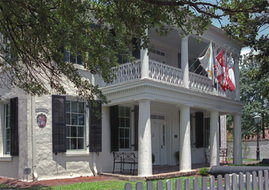 The Condé Charlotte Museum House
The Condé Charlotte Museum House(Sheila Hagler)
Soldiers and Captives, Boarders and Brides: The Many Lives of Condé Charlotte
By Laura Jane Rogers and Elizabeth Wade
Situated near Fort Condé, Mobile’s Condé Charlotte Museum House boasts a complex and often mysterious history. In 1957 the National Society of Colonial Dames in the State of Alabama purchased the house and began efforts to restore and preserve it. Eventually, they opened the site as a museum of Mobile’s history. However, along the way, preservationists realized that the house’s history held more layers than originally thought. Researchers know the house has been used as a residence, an office, and a boarding house. However, archaeologists have also found evidence to suggest that some part of the structure may once have formed a city jail, and it possibly even constituted part of a magazine for nearby Fort Condé. Laura Rogers and Elizabeth Wade explore the mysteries surrounding this fascinating historical treasure, and archaeologist Bonnie Gums details the current research being conducted on the site.
Additional Information
To learn more about the ongoing efforts to uncover the history of the house, or to explore its collections, visit the Condé Charlotte Museum House at 104 Theatre Street, Mobile, Alabama 36602. The house is open from 10:00 a.m. until 4:00 p.m., Tuesday–Saturday. For more information, call 251-432-4722.
The following articles in the Encyclopedia of Alabama will also be of interest:
About the Author
Laura Jane Poole Rogers is proud to have grown up in Eutaw, the heart of the Blackbelt of Alabama. After briefly attending the University of Alabama, she married Dr. David Rogers. While and after raising four children with her husband, Laura attended the University of South Alabama (USA) in Mobile, Parsons School of Design in NYC, and the University of Southern Mississippi (USM) earning a BA and MA from USA and a PhD in Communication from USM. She divides her time between communication and historical research, exercising, reading, writing, teaching at USA, preservation activities related to CCMH, and family and friends. She is co-chairperson of the Condé Charlotte Museum House board of directors.
Elizabeth Wade serves as an assistant editor for Alabama Heritage and is a PhD candidate in American literature at the University of Alabama. Her recent work appears in or is forthcoming from such journals asPoet Lore, the Oxford American, and Arts and Letters. She is currently working to establish an archive of materials related to Alabama fortune-teller Rena Teel.
By Laura Jane Rogers and Elizabeth Wade
Situated near Fort Condé, Mobile’s Condé Charlotte Museum House boasts a complex and often mysterious history. In 1957 the National Society of Colonial Dames in the State of Alabama purchased the house and began efforts to restore and preserve it. Eventually, they opened the site as a museum of Mobile’s history. However, along the way, preservationists realized that the house’s history held more layers than originally thought. Researchers know the house has been used as a residence, an office, and a boarding house. However, archaeologists have also found evidence to suggest that some part of the structure may once have formed a city jail, and it possibly even constituted part of a magazine for nearby Fort Condé. Laura Rogers and Elizabeth Wade explore the mysteries surrounding this fascinating historical treasure, and archaeologist Bonnie Gums details the current research being conducted on the site.
Additional Information
To learn more about the ongoing efforts to uncover the history of the house, or to explore its collections, visit the Condé Charlotte Museum House at 104 Theatre Street, Mobile, Alabama 36602. The house is open from 10:00 a.m. until 4:00 p.m., Tuesday–Saturday. For more information, call 251-432-4722.
The following articles in the Encyclopedia of Alabama will also be of interest:
- Mobile
- Fort Condé (image)
About the Author
Laura Jane Poole Rogers is proud to have grown up in Eutaw, the heart of the Blackbelt of Alabama. After briefly attending the University of Alabama, she married Dr. David Rogers. While and after raising four children with her husband, Laura attended the University of South Alabama (USA) in Mobile, Parsons School of Design in NYC, and the University of Southern Mississippi (USM) earning a BA and MA from USA and a PhD in Communication from USM. She divides her time between communication and historical research, exercising, reading, writing, teaching at USA, preservation activities related to CCMH, and family and friends. She is co-chairperson of the Condé Charlotte Museum House board of directors.
Elizabeth Wade serves as an assistant editor for Alabama Heritage and is a PhD candidate in American literature at the University of Alabama. Her recent work appears in or is forthcoming from such journals asPoet Lore, the Oxford American, and Arts and Letters. She is currently working to establish an archive of materials related to Alabama fortune-teller Rena Teel.
DEPARTMENT ABSTRACTS
 This architectural illustration
This architectural illustration consolidated local support for
the restoration of Antioch Baptist Church
(Thomas Kaufmann)
Southern Architecture and Preservation
Preserving African American Historic Places: Alabama’s Black Heritage Council
By Frazine Taylor and Dorothy Walker
Since 1984 the Alabama Historical Commission’s Black Heritage Council has labored to preserve and promote the state’s significant sites in African American history. In addition to its educational efforts, the council has helped preserve and recognize the 1965 Voting Rights Trail, Alabama’s African American churches, and the state’s black colleges and universities.
Additional Information
The following articles in the Encyclopedia of Alabama will also be of interest:
About the Author
Frazine Taylor is chair of the Alabama Black Heritage Council and is retired from the staff of the Alabama Department of Archives and History. Dorothy Walker is outreach coordinator for the Alabama Historical Commission. Robert Gamble is senior architectural historian for the Alabama Historical Commission and is standing editor of the “Southern Architecture and Preservation” department of Alabama Heritage.
Preserving African American Historic Places: Alabama’s Black Heritage Council
By Frazine Taylor and Dorothy Walker
Since 1984 the Alabama Historical Commission’s Black Heritage Council has labored to preserve and promote the state’s significant sites in African American history. In addition to its educational efforts, the council has helped preserve and recognize the 1965 Voting Rights Trail, Alabama’s African American churches, and the state’s black colleges and universities.
Additional Information
The following articles in the Encyclopedia of Alabama will also be of interest:
- Selma to Montgomery March
- Historically Black College and Universities in Alabama
- Black Baptists in Alabama
About the Author
Frazine Taylor is chair of the Alabama Black Heritage Council and is retired from the staff of the Alabama Department of Archives and History. Dorothy Walker is outreach coordinator for the Alabama Historical Commission. Robert Gamble is senior architectural historian for the Alabama Historical Commission and is standing editor of the “Southern Architecture and Preservation” department of Alabama Heritage.
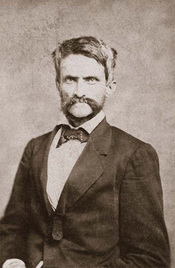 John Anthony Winston
John Anthony WinstonAlabama's first
native-born governor
(Alabama Department
of Archives and History)
Becoming Alabama
Quarter by Quarter
By Joseph W. Pearson, Megan L. Bever, and Matthew Downs
Editor’s Note: Alabama Heritage, the Summersell Center for Study of the South, the University of Alabama Department of History, and the Alabama Tourism Department offer this department as a part of the statewide “Becoming Alabama” initiative—a cooperative venture of state organizations to commemorate Alabama’s experiences related to the Creek War, the Civil War, and the civil rights movement. Quarter by quarter we will take you to the corresponding seasons 200, 150, and 50 years ago—sometimes describing the most pivotal events, sometimes describing daily life, but always illuminating a world in flux. We will wait for the ultimate outcomes as our forbears did—over time. For those joining the story in progress, you can find earlier quarters on our website.
In the latest installment of "Becoming Alabama," Joseph Pearson illuminates the cultural divide between Creeks and white settlers as the territorial governor contemplated the appropriate reaction to an intratribal murder in 1810. Megan Bever continues to trace the events leading up to the 1860 presidential election, focusing this quarter on the Baltimore Convention and the Constitutional Unionists. And Matthew Downs looks at 1960 and the connection of the American civil rights movement to liberation efforts in several African nations. As always, we include a calendar of scheduled "Becoming Alabama" events.
Additional Information
The following articles in the Encyclopedia of Alabama will also be of interest:
About the Author
Joseph W. Pearson is currently a PhD student in the Department of History at the University of Alabama. His research interests include the nineteenth-century South, antebellum politics, and political culture.
Megan L. Bever is currently a PhD student in the Department of History at the University of Alabama. Her research interests include the nineteenth-century South and the Civil War in American culture.
Matthew L. Downs is a PhD student in the Department of History at the University of Alabama. His dissertation investigates the federal government’s role in the economic development of the Tennessee Valley.
Quarter by Quarter
By Joseph W. Pearson, Megan L. Bever, and Matthew Downs
Editor’s Note: Alabama Heritage, the Summersell Center for Study of the South, the University of Alabama Department of History, and the Alabama Tourism Department offer this department as a part of the statewide “Becoming Alabama” initiative—a cooperative venture of state organizations to commemorate Alabama’s experiences related to the Creek War, the Civil War, and the civil rights movement. Quarter by quarter we will take you to the corresponding seasons 200, 150, and 50 years ago—sometimes describing the most pivotal events, sometimes describing daily life, but always illuminating a world in flux. We will wait for the ultimate outcomes as our forbears did—over time. For those joining the story in progress, you can find earlier quarters on our website.
In the latest installment of "Becoming Alabama," Joseph Pearson illuminates the cultural divide between Creeks and white settlers as the territorial governor contemplated the appropriate reaction to an intratribal murder in 1810. Megan Bever continues to trace the events leading up to the 1860 presidential election, focusing this quarter on the Baltimore Convention and the Constitutional Unionists. And Matthew Downs looks at 1960 and the connection of the American civil rights movement to liberation efforts in several African nations. As always, we include a calendar of scheduled "Becoming Alabama" events.
Additional Information
The following articles in the Encyclopedia of Alabama will also be of interest:
- Creeks in Alabama
- Plan of Civilization
- Creek War of 1813
- William Yancey
- John A. Winston
- Unionism
- Democratic Party in Alabama
- Modern Civil Right Movement in Alabama
- Student Non-Violent Coordinating Committee in Alabama (SNCC)
- John Lewis
- Martin Luther King, Jr.
- Letter from a Birmingham Jail
- John Bell (image)
About the Author
Joseph W. Pearson is currently a PhD student in the Department of History at the University of Alabama. His research interests include the nineteenth-century South, antebellum politics, and political culture.
Megan L. Bever is currently a PhD student in the Department of History at the University of Alabama. Her research interests include the nineteenth-century South and the Civil War in American culture.
Matthew L. Downs is a PhD student in the Department of History at the University of Alabama. His dissertation investigates the federal government’s role in the economic development of the Tennessee Valley.
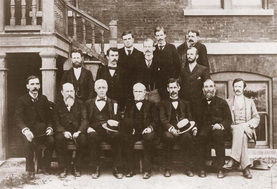 Patrick H. Mell, Jr. and his Auburn colleagues
Patrick H. Mell, Jr. and his Auburn colleagues(Auburn University Archives)
Nature Journal
Mell Versus Mohr: The Great Botanical Iron Bowl of 1896
By L. J. Davenport
Naturalist Larry Davenport weaves an entertaining and informative tale of the rivalry of two botanists, Charles T. Mohr and Patrick H. Mell. One held a PhD; the other was a freshman student. One had ties to the University of Alabama; the other attended Auburn’s Agricultural and Mechanical College. When both men produced chronicles of Alabama’s plant life, the ensuing controversy produced an intensity normally reserved for the gridiron.
Additional Information
We thank a subscriber from Auburn for making us aware of the many accomplishments of Patrick Mell (who took a good-natured ribbing in this piece). He tells us that Mell received two honorary doctoral degrees, one from the University of Georgia and the other from the University of South Carolina. He further writes,
"Always concerned about the practical application of scientific knowledge, Mell had many interests as an academician, including geology and climatology, to both of which he made important contributions. Since Auburn had the first chair of biology in the South and also pioneered in laboratory instruction in the region, Mell authored, ‘Biological laboratory methods’ (1892) and ‘Botanical laboratory guides’ (1895). His work as botanist included ‘Wild grasses of Alabama’ (1886) and ‘Grasses and their cultivation’ (1889). Nevertheless, his chief interest as a botanist was in the cotton plant, about which he wrote the following treatises: ‘Microscopic study of the cotton plant’ (1890); ‘Climatology of the cotton plant’ (1893); and ‘Hybrids from American and foreign cotton’ (1897). In 1900 . . . Mell . . . won a gold medal for his work on cotton from the Paris Exposition. In 1902 Mell began a distinguished career as president of Clemson College, and he drew on the experience to write ‘Administrative methods in American colleges.’"Alabama Heritage hopes to give Dr. Mell his due in a future article.
About the Author
Larry Davenport is a professor of biology at Samford University in Birmingham, Alabama.
Mell Versus Mohr: The Great Botanical Iron Bowl of 1896
By L. J. Davenport
Naturalist Larry Davenport weaves an entertaining and informative tale of the rivalry of two botanists, Charles T. Mohr and Patrick H. Mell. One held a PhD; the other was a freshman student. One had ties to the University of Alabama; the other attended Auburn’s Agricultural and Mechanical College. When both men produced chronicles of Alabama’s plant life, the ensuing controversy produced an intensity normally reserved for the gridiron.
Additional Information
We thank a subscriber from Auburn for making us aware of the many accomplishments of Patrick Mell (who took a good-natured ribbing in this piece). He tells us that Mell received two honorary doctoral degrees, one from the University of Georgia and the other from the University of South Carolina. He further writes,
"Always concerned about the practical application of scientific knowledge, Mell had many interests as an academician, including geology and climatology, to both of which he made important contributions. Since Auburn had the first chair of biology in the South and also pioneered in laboratory instruction in the region, Mell authored, ‘Biological laboratory methods’ (1892) and ‘Botanical laboratory guides’ (1895). His work as botanist included ‘Wild grasses of Alabama’ (1886) and ‘Grasses and their cultivation’ (1889). Nevertheless, his chief interest as a botanist was in the cotton plant, about which he wrote the following treatises: ‘Microscopic study of the cotton plant’ (1890); ‘Climatology of the cotton plant’ (1893); and ‘Hybrids from American and foreign cotton’ (1897). In 1900 . . . Mell . . . won a gold medal for his work on cotton from the Paris Exposition. In 1902 Mell began a distinguished career as president of Clemson College, and he drew on the experience to write ‘Administrative methods in American colleges.’"Alabama Heritage hopes to give Dr. Mell his due in a future article.
About the Author
Larry Davenport is a professor of biology at Samford University in Birmingham, Alabama.
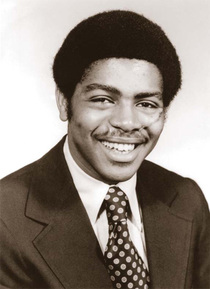 Cleo Thomas
Cleo ThomasFirst African American SGA president
at the University of Alabama
(Hoole Special Collections Library)
Alabama Oral History Project
Cleo Thomas Remembers
By Daniel Menestres
Editor’s Note: The Alabama Oral History Project is a joint project of the Summersell Center for the Study of the South and W. S. Hoole Special Collections Library, both at the University of Alabama. The project is funded through a grant from the Watson-Brown Foundation.
This quarter the Alabama Oral History Project visits with Cleo Thomas of Anniston. Thomas, the first African American SGA President at the University of Alabama, recounts his election to that office and updates readers on the subsequent stages of his life.
Additional Information
The following articles in the Encyclopedia of Alabama will also be of interest:
About the Author
Daniel Menestres is nearing completion of his PhD in history from the University of Alabama.
Cleo Thomas Remembers
By Daniel Menestres
Editor’s Note: The Alabama Oral History Project is a joint project of the Summersell Center for the Study of the South and W. S. Hoole Special Collections Library, both at the University of Alabama. The project is funded through a grant from the Watson-Brown Foundation.
This quarter the Alabama Oral History Project visits with Cleo Thomas of Anniston. Thomas, the first African American SGA President at the University of Alabama, recounts his election to that office and updates readers on the subsequent stages of his life.
Additional Information
The following articles in the Encyclopedia of Alabama will also be of interest:
- University of Alabama
- Stand in the Schoolhouse Door
- Gov. Wallace’s Stand in the Schoolhouse Door (image)
About the Author
Daniel Menestres is nearing completion of his PhD in history from the University of Alabama.
Reading the Southern Past
Lincoln and Davis: New Examinations
By Stephen Goldfarb
In his latest review, Stephen Goldfarb considers the Civil War’s great leaders. Tried By War: Abraham Lincoln as Commander in Chief (Penguin Press, 2008) by James M. McPherson presents the effects of the war on Lincoln’s presidency. In Jefferson Davis and the Civil War Era (Louisiana State University Press, 2008), William J. Cooper follows Davis’s preparation for war and performance in it. Taken together, these texts offer a compelling counterpoint, revealing intimate glimpses of the men who led America’s divided populace.
Additional Information
The following articles in the Encyclopedia of Alabama will also be of interest:
About the Author
Stephen Goldfarb holds a PhD in the history of science and technology. He retired from a public library in 2003.
Lincoln and Davis: New Examinations
By Stephen Goldfarb
In his latest review, Stephen Goldfarb considers the Civil War’s great leaders. Tried By War: Abraham Lincoln as Commander in Chief (Penguin Press, 2008) by James M. McPherson presents the effects of the war on Lincoln’s presidency. In Jefferson Davis and the Civil War Era (Louisiana State University Press, 2008), William J. Cooper follows Davis’s preparation for war and performance in it. Taken together, these texts offer a compelling counterpoint, revealing intimate glimpses of the men who led America’s divided populace.
Additional Information
The following articles in the Encyclopedia of Alabama will also be of interest:
- Civil War in Alabama
- Jefferson Davis (image)
About the Author
Stephen Goldfarb holds a PhD in the history of science and technology. He retired from a public library in 2003.
